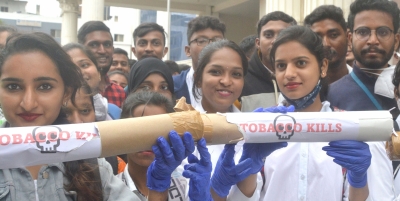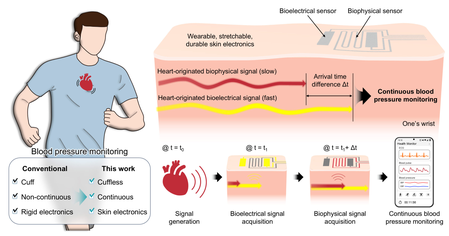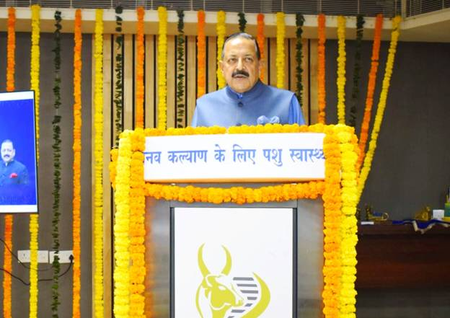
New Delhi, Aug 11 (IANS) More than the new and trendy alternatives, traditional tobacco products like cigarettes, bidis, and chewable tobacco are posing a silent crisis for India’s youth, significantly raising the risk of cancers like lung, mouth and throat, said health experts on Monday, calling out the need to step up the fight against these to push the fight against tobacco.
According to the 2019 Global Youth Tobacco Survey, 8.5 per cent of students aged 13-15 use tobacco, contributing to 1.3 million deaths annually.
With tobacco linked to 90 per cent of lung cancer cases, the experts warned that this overlooked epidemic demands immediate action beyond the vaping debate.
“Over 90 per cent of lung cancer cases in India are linked to combustible tobacco. In my clinical experience, I regularly treat patients as young as 17 for tobacco-induced complications. What we need is a calibrated approach that combines prevention, regulation, and public awareness — not selective panic,” Dr. Narender Saini, Chairman, Antimicrobial Resistance (AMR) Standing Committee, at Indian Medical Association (IMA), told IANS.
There is growing concern in the medical community that public discourse on youth addiction is missing the mark.
While focus has been on new trends, the experts warned that the silent epidemic of oral and throat cancer among under-25s, linked to traditional tobacco products like gutkha and khaini, is a more urgent and dangerously overlooked crisis.
“The data points to a stark reality — traditional tobacco’s grip on our youth far outweighs other concerns, urging us to rethink our priorities. Our focus must expand from trendy alternatives to the proven killers: cigarettes, bidis, and chewable tobacco,” Dr Chandrakant S Pandav, Padma Shri Awardee, and former Prof and HoD, Community Medicine, AIIMS, New Delhi, told IANS.
The global health expert noted that the traditional tobacco landscape remains largely unchallenged in schools and villages. Despite soaring concerns over vaping, combustible and smokeless tobacco products continue to thrive, fuelled by cultural acceptance and unchecked distribution.
“Tobacco use poses immediate and long-term risks to infection control. My clinical experience reveals a stark contrast: tobacco-related illnesses are rampant, while vaping-related lung issues are remarkably rare,” Saini said.
The experts called for strengthening school-based interventions, community awareness campaigns, and stricter enforcement of existing laws.
“Bridging the gap between data and policy, stakeholders must now craft a unified strategy that tackles both supply and demand, ensuring young Indians are shielded from every form of tobacco harm,” Pandav added.
Dr. Pawan Gupta, Senior Consultant, Pulmonary Medicine at a leading city-based hospital, told IANS that “the damage inflicted by traditional tobacco begins early and lasts a lifetime”.
“We witness its devastating consequences daily — oral cancers, lung diseases, and heart conditions — often in individuals who started using these products in their teenage years. With 1.35 million deaths annually, the science is clear: traditional tobacco is a proven killer, and our youth are its most vulnerable targets,” Gupta said.
–IANS
rvt/




